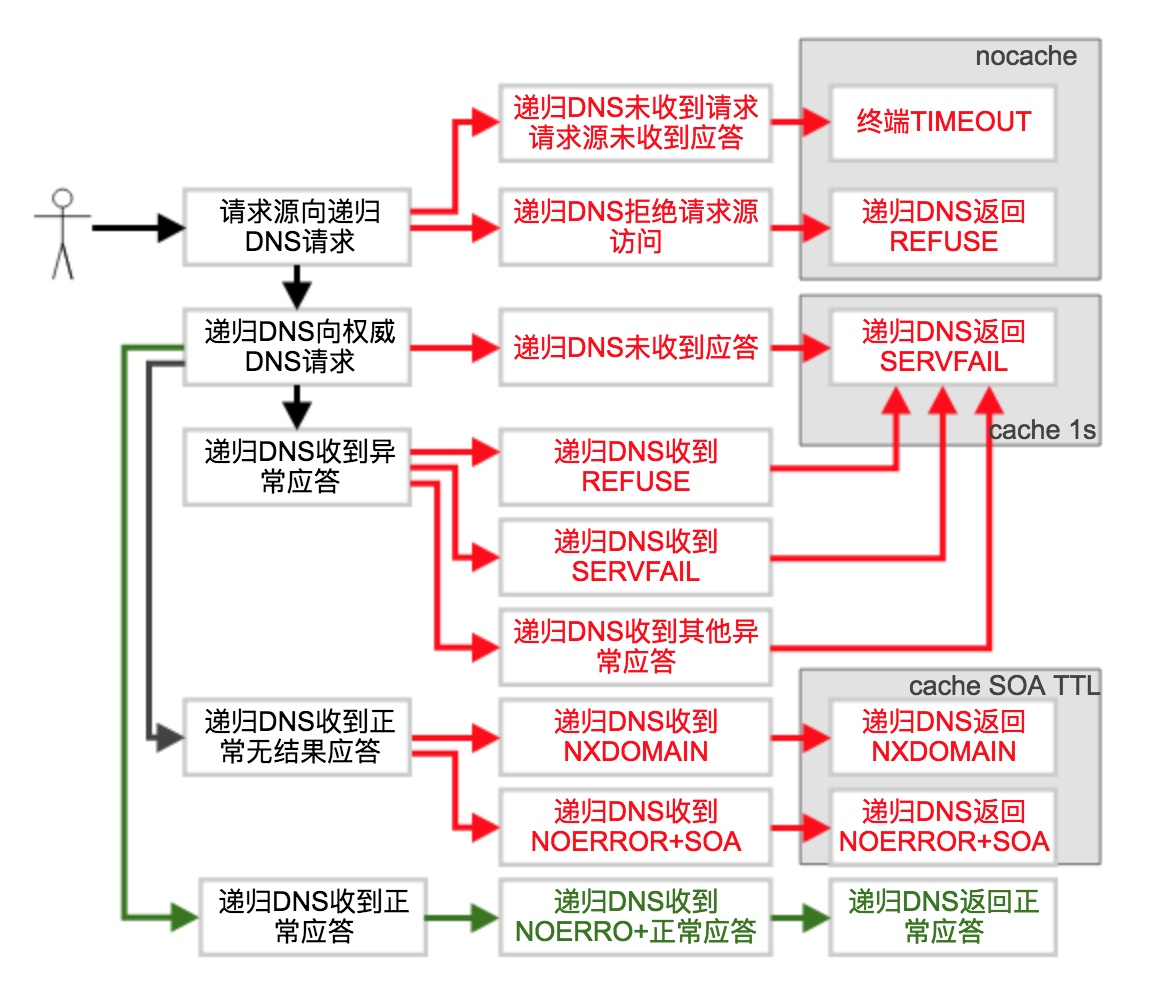BIND 主从配置
环境:
master:172.31.182.144
slave:172.31.182.147
一、安装
yum install bind bind-chroot -y
(源码包:https://downloads.isc.org/isc/bind9/9.14.8/bind-9.14.8.tar.gz)
二、master配置
[root@master named]# cat /etc/named.conf |grep -Ev "//|^$"
options {
listen-on port 53 { 172.31.182.144; };
listen-on-v6 port 53 { ::1; };
directory "/var/named";
dump-file "/var/named/data/cache_dump.db";
statistics-file "/var/named/data/named_stats.txt";
memstatistics-file "/var/named/data/named_mem_stats.txt";
recursing-file "/var/named/data/named.recursing";
secroots-file "/var/named/data/named.secroots";
/*
- If you are building an AUTHORITATIVE DNS server, do NOT enable recursion.
- If you are building a RECURSIVE (caching) DNS server, you need to enable
recursion.
- If your recursive DNS server has a public IP address, you MUST enable access
control to limit queries to your legitimate users. Failing to do so will
cause your server to become part of large scale DNS amplification
attacks. Implementing BCP38 within your network would greatly
reduce such attack surface
*/
recursion yes;
dnssec-enable yes;
dnssec-validation yes;
/* Path to ISC DLV key */
bindkeys-file "/etc/named.iscdlv.key";
managed-keys-directory "/var/named/dynamic";
pid-file "/run/named/named.pid";
session-keyfile "/run/named/session.key";
};
logging {
channel default_debug {
file "data/named.run";
severity dynamic;
};
};
zone "adfile.wifi8.com" {
type master;
file "adfile.wifi8.com.hosts";
allow-transfer {172.31.182.147;};
notify yes;
also-notify { 172.31.182.147; }; //指定slave server的IP位址
};
zone "." IN {
type hint;
file "named.ca";
};
include "/etc/named.rfc1912.zones";
include "/etc/named.root.key";
zone文件:
[root@master named]# cat /var/named/adfile.wifi8.com.hosts
$TTL 180
@ IN SOA ns1.test.com. root.adfile.wifi8.com. ( ;
22190928 ; serial
10S ; refresh
1H ; retry
1M ; expire
44H ) ; minimum
IN NS ns1.test.com.
IN NS ns2.test.com.
ns1 IN A 172.31.182.144
ns2 IN A 172.31.182.147
adfile.wifi8.com. IN A 10.254.33.32
adfile.wifi8.com. IN A 10.254.33.34
各参数解析:http://dns-learning.twnic.net.tw/bind/intro6.html
启动:
systemctl restart named.service
三、slave配置
[root@node02 named]# cat /etc/named.conf |grep -Ev "//|^$"
options {
listen-on port 53 { 172.31.182.147; };
listen-on-v6 port 53 { ::1; };
directory "/var/named";
dump-file "/var/named/data/cache_dump.db";
statistics-file "/var/named/data/named_stats.txt";
memstatistics-file "/var/named/data/named_mem_stats.txt";
recursing-file "/var/named/data/named.recursing";
secroots-file "/var/named/data/named.secroots";
/*
- If you are building an AUTHORITATIVE DNS server, do NOT enable recursion.
- If you are building a RECURSIVE (caching) DNS server, you need to enable
recursion.
- If your recursive DNS server has a public IP address, you MUST enable access
control to limit queries to your legitimate users. Failing to do so will
cause your server to become part of large scale DNS amplification
attacks. Implementing BCP38 within your network would greatly
reduce such attack surface
*/
recursion yes;
dnssec-enable yes;
dnssec-validation yes;
/* Path to ISC DLV key */
bindkeys-file "/etc/named.iscdlv.key";
managed-keys-directory "/var/named/dynamic";
pid-file "/run/named/named.pid";
session-keyfile "/run/named/session.key";
};
logging {
channel default_debug {
file "data/named.run";
severity dynamic;
};
};
zone "adfile.wifi8.com" {
type slave;
file "adfile.wifi8.com.hosts";
masters { 172.31.182.144; };
};
zone "." IN {
type hint;
file "named.ca";
};
include "/etc/named.rfc1912.zones";
include "/etc/named.root.key";
启动后自动同步master解析配置:
systemctl restart named.service
添加域名脚本:
#################master:#################
#!/bin/bash
read -p "Please enter the domain name you need to add:" DOMAIN
read -p "Please enter the domain name corresponding to the IP record:" IP
HOSTS_DIR=/mnt/sscp/data/named/hosts
NAMED_CONFIG_DIR=/mnt/sscp/data/named/conf/named.conf
#Create domain record file
cat >${HOSTS_DIR}/${DOMAIN}.hosts<<EOF
$TTL 180
@ IN SOA ns1.sscp.mtr.com. root.${DOMAIN}. ( ;
0 ; serial
1D ; refresh
1H ; retry
1W ; expire
44H ) ; minimum
IN NS ns1.sscp.mtr.com.
IN NS ns2.sscp.mtr.com.
ns1 IN A 128.164.250.26
ns2 IN A 128.164.250.27
${DOMAIN}. IN A ${IP}
EOF
#Add named config
cat >>${NAMED_CONFIG_DIR}<<EOF
zone "${DOMAIN}" IN{
type master;
file "${DOMAIN}.hosts";
allow-transfer {128.164.250.27;};
};
EOF
# Checkconf named config
/mnt/sscp/app/named/sbin/named-checkconf
#Restart named server
/mnt/sscp/app/named/sbin/rndc -s 127.0.0.1 reload
if [ $? = 0 ];then
echo "Added successfully!!"
else
echo "Add failed!! Please check"
fi
#################slave:#################
#!/bin/bash
read -p "Please enter the domain name you need to add:" DOMAIN
HOSTS_DIR=/mnt/sscp/data/named/hosts
NAMED_CONFIG_DIR=/mnt/sscp/data/named/conf/named.conf
#Add named config
cat >>${NAMED_CONFIG_DIR}<<EOF
zone "${DOMAIN}" IN{
type slave;
file "${DOMAIN}.hosts";
masters { 128.164.250.26; };
};
EOF
# Checkconf named config
/mnt/sscp/app/named/sbin/named-checkconf
#Restart named server
/mnt/sscp/app/named/sbin/rndc -s 127.0.0.1 reload
if [ $? = 0 ];then
echo "Added successfully!!"
else
echo "Add failed!! Please check"
fi
踩坑:
1、最后需要在主DNS服务器上的/var/named/ZONE_NAME.zone 文件里添加将该从服务的NS记录;
2、同时若想要实现主从服务器的数据同步,在修改好主服务器的/var/named/ZONE_NAME.zone 文件时,必须将该文件里的 序列号 增大才行,增大并保存退出后,主服务器会自动向从服务器推送(push)修改后的文件内容;
